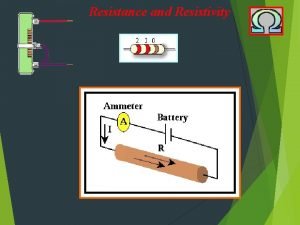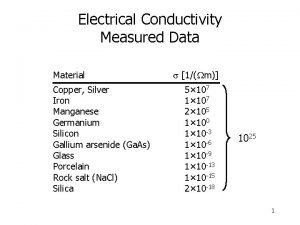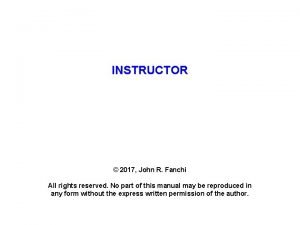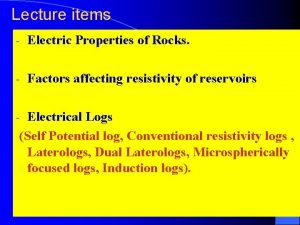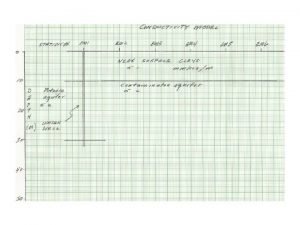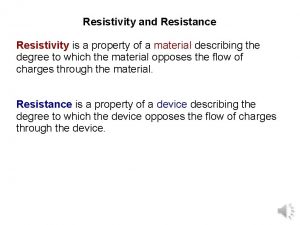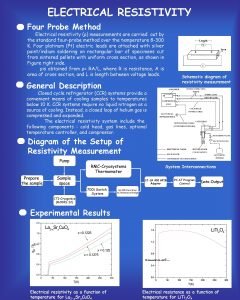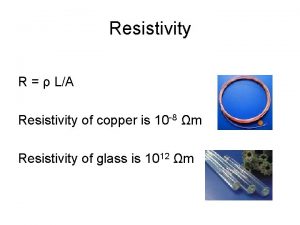RESISTANCE V RESISTIVITY The resistance of a piece








- Slides: 8

RESISTANCE V RESISTIVITY The resistance of a piece of material of length L and cross-sectional area A is given by Where R = Resistance �� = resistivity (units are �� m) L = length of the path through the material A = cross sectional area of the material

RESISTANCE V RESISTIVITY Resistivity is an inherent property of a material. Resistivity is given in ohm-meters. Resistivity is small for conductors, and large for non-conductors. Resistance depends on resistivity and the geometry of the material.

RESISTANCE V RESISTIVITY Factors which affect the resistance of a material: 1. Temperature. The resistance of all substances changes a bit with temperature. In pure metals, the resistance increases rapidly with temperature. 2. Length. Resistance of a uniform conductor is directly proportional to its length. 3. Cross-Sectional Area. The resistance of a uniform conductor is inversely proportional to crosssectional area. 4. Material Properties. The resistance depends on the material from which it is made. A numerical value called the resistivity is assigned to materials based on how well they conduct electricity.

RESISTANCE V RESISTIVITY To remember trends in electrical resistance, it is helpful to think of water flowing in a pipe. If the length of the pipe increases, the resistance increases. Think of drinking through a very long straw -- It would take a lot of effort! On the other hand, increasing the diameter (and so the cross-sectional area) decreases the resistance. A straw with a bigger diameter is easier to use, especially when drinking a thick milkshakes.

OHM’S LAW Yesterday, you began solving problems using Ohm’s Law. This law states that: V=IR

OHMIC CONDUCTORS If a material obeys Ohm’s Law, then is is called an “ohmic conductor”. This just means you can measure the Voltage and current in the material and know the Resistance, which also means you can calculate the resistivity of that material. Once you know the resistivity of a material, you can work backwards from any geometric arrangement to determine the resistance, voltage or current through another sample of the material.

Power The most important function of a circuit is to transmit energy from a source to a device. These are very useful forms of the Power equation, but if you only have to remember one, I would go with P = IV…

Assignment Focus p 633 #3, 5 Problems p. 634 # 10, 22, 23, 24, 27 most important function of a circuit is to transmit energy from a source to a device.

